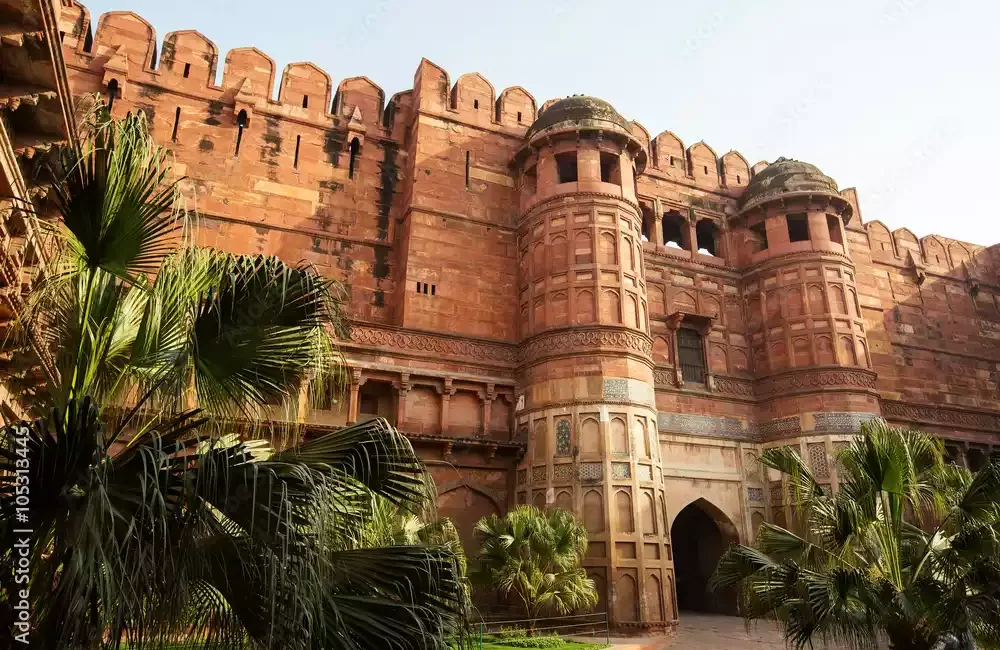Exploring Agra: A Comprehensive Guide
Introduction
Agra, located in the northern part of India in the state of Uttar Pradesh, is one of the most historically rich and culturally vibrant cities in the country. Known globally for its iconic Taj Mahal, Agra offers a wealth of attractions, a rich history, diverse cultural heritage, and a unique culinary landscape. This article delves deep into the various facets of Agra, from its geography and demographics to its historical significance and modern-day administration.
Geography and Climate of Agra
Situated on the banks of the Yamuna River, Agra spans an area of approximately 4,027 square kilometers. The city's topography is mostly flat, with the river providing a fertile plain that supports agricultural activities.
Agra experiences a semi-arid climate, with three main seasons: summer, monsoon, and winter. Summers (March to June) are extremely hot, with temperatures often exceeding 40°C (104°F). The monsoon season (July to September) brings moderate to heavy rainfall, while winters (October to February) are cool and pleasant, with temperatures ranging from 5°C to 20°C (41°F to 68°F).
Diagram: Climate Overview
Demographics and Culture
Agra's population, according to the 2011 census, stands at approximately 1.6 million. The city is a melting pot of diverse communities, with Hindus constituting the majority, followed by Muslims, Jains, and Christians. This diversity is reflected in the city's cultural practices, festivals, and everyday life.
Festivals and Traditions
Agra celebrates a wide array of festivals with great fervor. Key festivals include Diwali, Eid, Holi, and the Taj Mahotsav, a ten-day festival held in February that showcases the rich heritage and culture of the region. The city's culture is also evident in its traditional music and dance forms, such as Kathak and Bhakti Sangeet.
Historical Significance
Agra's history dates back to the Mahabharata period when it was known as Agravana. However, it gained prominence during the Mughal era. Founded by Sikandar Lodi in the 16th century, Agra was later transformed into a grand capital by the Mughals, particularly under the reign of Emperor Akbar, Shah Jahan, and Aurangzeb.
Mughal Architecture
Agra is home to some of the finest examples of Mughal architecture, with the Taj Mahal being the most celebrated. Other notable monuments include:
- Agra Fort: A UNESCO World Heritage site, this majestic fort was the main residence of the Mughal emperors.
- Fatehpur Sikri: A historic city founded by Akbar, known for its stunning red sandstone buildings.
- Itimad-ud-Daulah's Tomb: Often referred to as the "Baby Taj," this exquisite mausoleum is a precursor to the Taj Mahal.
Modern Administration
Agra is divided into four administrative zones, each overseen by a Municipal Commissioner. The city's governance includes a range of services from urban planning and sanitation to health and education. The Agra Development Authority (ADA) is responsible for the city's infrastructural development and urban planning.
Economy and Infrastructure
Agra's economy is diverse, with significant contributions from tourism, agriculture, and industry. The city is renowned for its leather goods, handicrafts, and marble inlay work.
Tourism
Tourism is a major economic driver for Agra, attracting millions of visitors annually. The Taj Mahal alone draws about 7-8 million tourists each year. The hospitality industry is well-developed, with numerous hotels, resorts, and guesthouses catering to a variety of budgets.
Transport
Agra is well-connected by road, rail, and air. The city lies on the Golden Quadrilateral, a network of highways connecting India's major cities. The Agra Cantonment railway station is a major rail hub, and the Agra Airport offers both domestic and limited international flights.
Cuisine of Agra
Agra's cuisine is a delightful blend of Mughal and North Indian flavors. The city is famous for its street food, including the following must-try dishes:
- Petha: A sweet made from ash gourd, available in various flavors.
- Bedai and Jalebi: A popular breakfast combination of spicy lentil-stuffed bread and sweet, syrupy jalebis.
- Mughlai Cuisine: Rich, aromatic dishes like biryani, kebabs, and kormas that reflect the city's Mughal heritage.
Notable Restaurants
Agra boasts numerous eateries that offer both traditional and contemporary dishes. Some notable restaurants include:
- Pinch of Spice: Known for its Mughlai dishes.
- Dasaprakash: Specializes in South Indian cuisine.
- Joney's Place: Famous for its budget-friendly Indian and Continental meals.
Education and Institutions
Agra is home to several prestigious educational institutions, including:
- Dr. B.R. Ambedkar University: A prominent university offering a range of undergraduate and postgraduate courses.
- Agra College: One of the oldest colleges in India, providing quality education in arts, science, and commerce.
- Dayalbagh Educational Institute: Known for its emphasis on holistic education and social service.
Notable Personalities
Agra has been the birthplace and home to several renowned personalities, including:
- Mirza Ghalib: One of the most celebrated poets in Urdu literature.
- Firaq Gorakhpuri: A prominent poet known for his contributions to Urdu poetry.
- Gopal Das Neeraj: A renowned poet and lyricist who penned many popular songs in Hindi cinema.
Conclusion
Agra is a city that beautifully blends its rich historical legacy with modern development. From the timeless allure of the Taj Mahal to the vibrant local culture, Agra offers a unique experience that captures the essence of India's diverse heritage. Whether you're a history buff, a culinary enthusiast, or a curious traveler, Agra promises a memorable journey through time and tradition.
